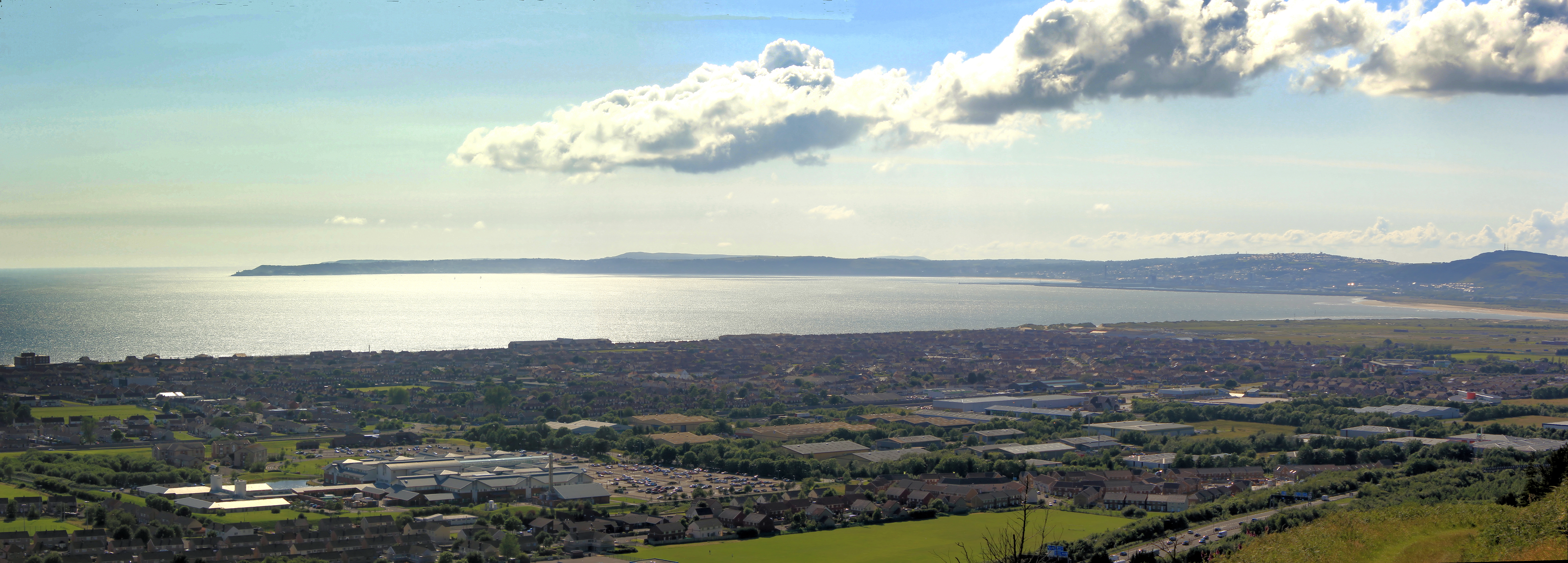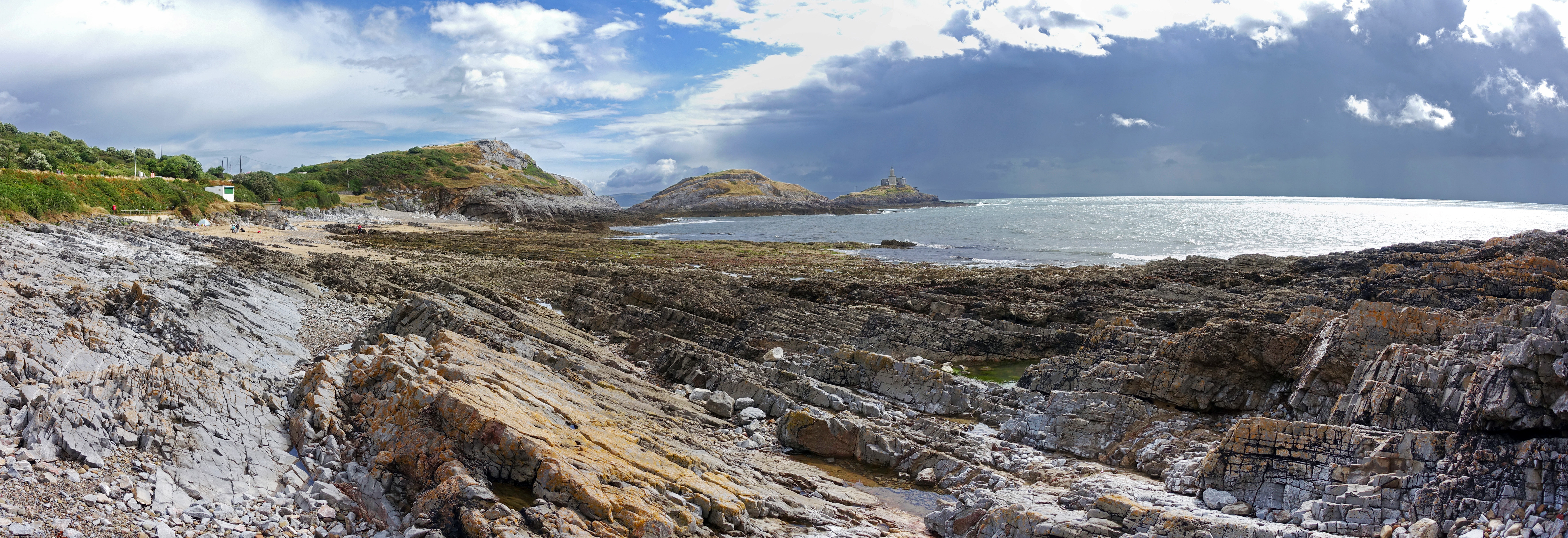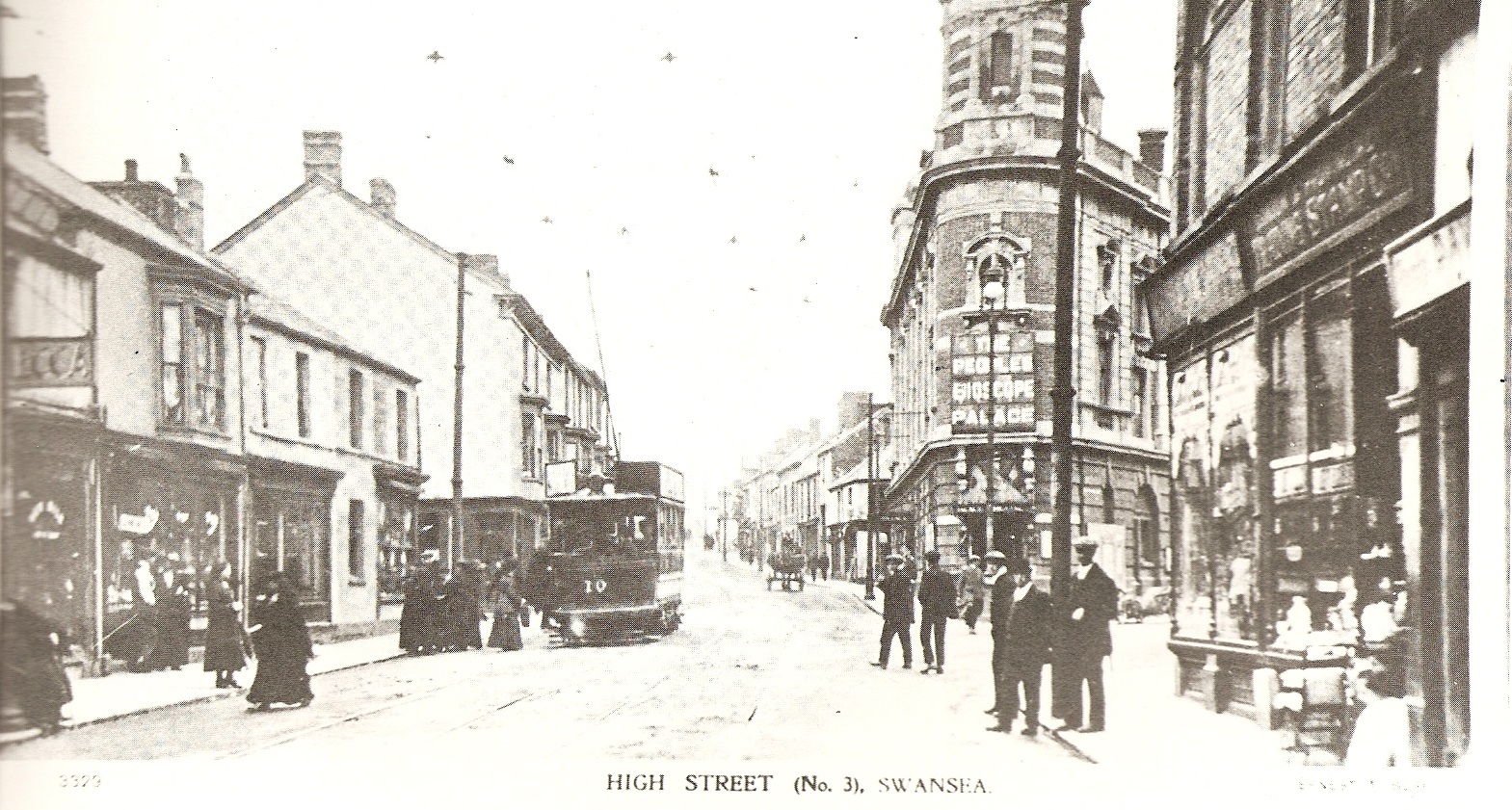|
Mumbles Beach
Mumbles Beach is a very small sheltered area of sand and rock pools sandwiched between Swansea Bay beach and Bracelet Bay in the south eastern corner of the Gower Peninsula, Swansea, Wales Wales ( ) is a Countries of the United Kingdom, country that is part of the United Kingdom. It is bordered by the Irish Sea to the north and west, England to the England–Wales border, east, the Bristol Channel to the south, and the Celtic .... A lot of sea life can be found in the pools and under the rocks, left trapped by the retreating tides. During the summer, this beach can get very busy with people combing the beach for hermit crabs and small fishes. The beach is accessible from a flight of steps beside the Mumbles Pier. References External links GowerUK.com - Mumbles BeachMumbles Beach on exploresouthwales.comwww.geograph.co.uk : photos of Mumbles, Mumbles Head, beach and surrounding area Gower Peninsula Swansea Bay Beaches of Swansea Coast of Swansea {{ ... [...More Info...] [...Related Items...] OR: [Wikipedia] [Google] [Baidu] |
Swansea Bay
Swansea Bay () is a bay on the southern coast of Wales. The River Neath, River Tawe, River Afan, River Kenfig and Clyne River flow into the bay. Swansea Bay and the upper reaches of the Bristol Channel experience a large tidal range. The shipping ports in Swansea Bay are Swansea Docks, Port Talbot Docks and Briton Ferry wharves. Each stretch of beach within the bay has its own name: * Aberavon Beach * Baglan Bay * Jersey Marine Beach * Swansea Beach * Mumbles Beach Oyster trade Oyster fishing was once an important industry in Swansea Bay, employing 600 people at its height in the 1860s. However, overfishing, disease and pollution had all but wiped out the oyster population by 1920. In 2005, plans were announced to reintroduce the Oyster farming industry. Pollution For the last two decades of the 20th century, the bay was blighted by pollution, partly from the surrounding heavy industry and partly from sewerage outlets being sited at inappropriate locations inclu ... [...More Info...] [...Related Items...] OR: [Wikipedia] [Google] [Baidu] |
Bracelet Bay
Bracelet Bay is a small bay located on the southern coast of the Gower Peninsula. It is the first bay one encounters after leaving Swansea Bay Swansea Bay () is a bay on the southern coast of Wales. The River Neath, River Tawe, River Afan, River Kenfig and Clyne River flow into the bay. Swansea Bay and the upper reaches of the Bristol Channel experience a large tidal range. The sh ... and rounding Mumbles Head. Surrounded by limestone cliffs, the bay is pebbly, with some sand. To the west, the bay is separated from Limeslade Bay by Tutt Hill, the location of a coastguard look-out station. One of the bay's most notable feature is the iconic "Big Apple" kiosk, a concrete structure built in the 1930s as a roadside advertisement. While several similar kiosks were erected along the South Wales coast, the Bracelet Bay kiosk is the only one still standing. After being damaged by a vehicle in 2009, it underwent significant repairs in 2010. In 2019, it was officially designate ... [...More Info...] [...Related Items...] OR: [Wikipedia] [Google] [Baidu] |
Gower Peninsula
The Gower Peninsula (), or simply Gower (), is a peninsula in the South West Wales, south-west of Wales. It is the most westerly part of the historic county of Glamorgan, and is now within the City and County of Swansea. It projects towards the Bristol Channel. In 1956, the majority of Gower became the first area in the United Kingdom to be designated an Area of Outstanding Natural Beauty. Until 1974, Gower was administered as a rural district. It was then merged with the county borough of Swansea. From 1974 to 1996, it formed the Swansea (district), Swansea district. Since 1996, Gower has been administered as part of the unitary authority of the City and County of Swansea council, City and County of Swansea. Since its establishment in 1999, the Gower (Senedd constituency), Gower Senedd constituency has only elected Labour members. The Gower (UK Parliament constituency), Gower constituency in Westminster had previously also elected only Labour Member of Parliament (United King ... [...More Info...] [...Related Items...] OR: [Wikipedia] [Google] [Baidu] |
Swansea
Swansea ( ; ) is a coastal City status in the United Kingdom, city and the List of urban areas in the United Kingdom, second-largest city of Wales. It forms a Principal areas of Wales, principal area, officially known as the City and County of Swansea (). The city is the List of cities in the United Kingdom, twenty-eighth largest in the United Kingdom. Located along Swansea Bay in south-west Wales, with the principal area covering the Gower Peninsula, it is part of the Swansea Bay (region), Swansea Bay region and part of the Historic counties of Wales, historic county of Glamorgan and the ancient Welsh commote of Gŵyr. The principal area is the second most List of Welsh principal areas by population, populous local authority area in Wales, with an estimated population of in . Swansea, along with Neath and Port Talbot, forms the Swansea urban area, with a population of 300,352 in 2011. It is also part of the Swansea Bay City Region. During the 19th-century industrial heyday, ... [...More Info...] [...Related Items...] OR: [Wikipedia] [Google] [Baidu] |
Wales
Wales ( ) is a Countries of the United Kingdom, country that is part of the United Kingdom. It is bordered by the Irish Sea to the north and west, England to the England–Wales border, east, the Bristol Channel to the south, and the Celtic Sea to the south-west. , it had a population of 3.2 million. It has a total area of and over of Coastline of Wales, coastline. It is largely mountainous with its higher peaks in the north and central areas, including Snowdon (), its highest summit. The country lies within the Temperate climate, north temperate zone and has a changeable, Oceanic climate, maritime climate. Its capital and largest city is Cardiff. A distinct Culture of Wales, Welsh culture emerged among the Celtic Britons after the End of Roman rule in Britain, Roman withdrawal from Britain in the 5th century, and Wales was briefly united under Gruffudd ap Llywelyn in 1055. After over 200 years of war, the Conquest of Wales by Edward I, conquest of Wales by King Edward I o ... [...More Info...] [...Related Items...] OR: [Wikipedia] [Google] [Baidu] |
Hermit Crab
Hermit crabs are anomuran Decapoda, decapod crustaceans of the superfamily (taxonomy), superfamily Paguroidea that have adapted to occupy empty scavenged mollusc shells to protect their fragile exoskeletons. There are over 800 species of hermit crab, most of which possess an asymmetric abdomen concealed by a snug-fitting shell. Hermit crabs' soft (non-Marine biogenic calcification, calcified) abdominal exoskeleton means they must occupy shelter produced by other organisms or risk being defenseless. The strong association between hermit crabs and their shelters has significantly influenced their biology. Almost 800 species carry mobile shelters (most often calcified Gastropod shell, snail shells); this protective mobility contributes to the diversity and multitude of these crustaceans which are found in almost all marine environments. In most species, development involves metamorphosis from symmetric, free-swimming larvae to morphologically asymmetric, benthic zone, benthic-dwellin ... [...More Info...] [...Related Items...] OR: [Wikipedia] [Google] [Baidu] |
Mumbles Pier
The Grade II listed structure of Mumbles Pier is an long Victorian pleasure pier built in 1898. It is located at the south-western corner of Swansea Bay near the village of Mumbles, within the city and county of Swansea, Wales. The pier is used for fishing and tourism, offering panoramic views of Swansea Bay with the Mumbles Lighthouse on one side and Port Talbot on the other. History Construction Designed by W. Sutcliffe Marsh and promoted by John Jones Jenkins of the Rhondda and Swansea Bay Railway, the pier opened on 10 May 1898 at a cost of £10,000. It was the western terminus for the world's first passenger carrying horsecar railway, the Swansea and Mumbles Railway; and a major terminal for the White Funnel paddle steamers of P & A Campbell, unloading tourists from routes along the River Severn and Bristol Channel. Heyday In the summer of 1899, Will C. Pepper, father of the musicians Harry S. Pepper and Dick Pepper, founded a long-running concert party on the ... [...More Info...] [...Related Items...] OR: [Wikipedia] [Google] [Baidu] |
Mumbles Beach Panorama
Mumbles () is a headland sited on the western edge of Swansea Bay on the southern coast of Wales. Toponym Mumbles has been noted for its unusual place name. The headland is thought by some to have been named by French sailors, after the shape of the two anthropomorphic islands which the headland comprises: the word "Mumbles" may be a corruption of the French ''les mamelles,'' meaning "the breasts". Another possible source of the name is the word Mamucium, which is generally thought to represent a Latinisation of an original Brythonic name, either from mamm- ("breast", in reference to a "breast-like hill") or from mamma ("mother", in reference to a local river goddess). Mumbles Lighthouse was built during the 1790s, and was converted to solar powered operation in 1995. Notable features Mumbles Pier was opened in 1898 at the terminus of the Swansea and Mumbles Railway, which was the world's first horse-drawn public passenger train service. It opened 2 Mar 1807 and used horse ... [...More Info...] [...Related Items...] OR: [Wikipedia] [Google] [Baidu] |
Beaches Of Swansea
A beach is a landform alongside a body of water which consists of loose particles. The particles composing a beach are typically made from rock, such as sand, gravel, shingle, pebbles, etc., or biological sources, such as mollusc shells or coralline algae. Sediments settle in different densities and structures, depending on the local wave action and weather, creating different textures, colors and gradients or layers of material. Though some beaches form on inland freshwater locations such as lakes and rivers, most beaches are in coastal areas where wave or current action deposits and reworks sediments. Erosion and changing of beach geologies happens through natural processes, like wave action and extreme weather events. Where wind conditions are correct, beaches can be backed by coastal dunes which offer protection and regeneration for the beach. However, these natural forces have become more extreme due to climate change, permanently altering beaches at very rapid ... [...More Info...] [...Related Items...] OR: [Wikipedia] [Google] [Baidu] |






